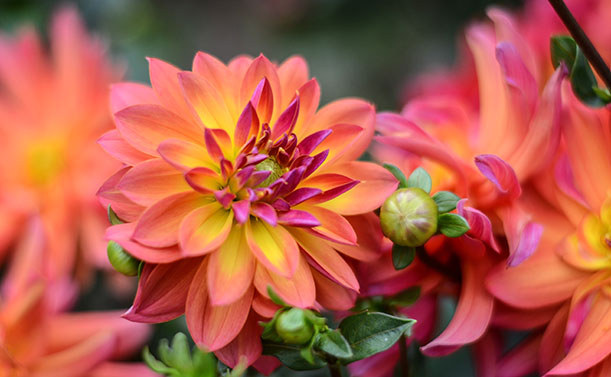BOOMbox at Home: Plants
September 30, 2020

This week, we will be exploring flowers, leaves, petals, and all things related to plants.
Flower Pressing
What better way to remember your favorite season than making it come alive in a journal? Pressing flowers is a great way to train the eye, get outdoors, and encourage design sense and creativity.
Flower pressing became popular in the early 19th century, when children and adults made formal albums of pressed wildflowers and plants for learning their characteristics and names. People now press flowers to use in art projects or to preserve their favorite flower in a journal.
To get started, head into your backyard or go on a neighborhood stroll to gather beautiful flowers or leaves that you like. Next, get a heavy weight to put on top, a notebook or journal, and your flowers. Start by making sure that the flower is completely dry, and use a tissue if necessary to get out any extra moisture. Place your flower face down between two sheets of your journal or book, then place the heavy weight on top of the closed book. After a couple days you’ll have a perfect pressed flower.
For detailed tutorials on how to press flowers, see these resources:
How to Press Flowers (for beginners)
How to Press Flowers (advanced)
Nature Frames
Need a picture frame for your family portrait? Nature frames are a great way to remember your favorite seasonal memories while serving as beautiful home decor.
To start, you need a picture frame (one you have lying around the house, or make your own with cardboard), glue, a pretty picture, and your favorite natural treasures, like pressed flowers, rocks, leaves, or sticks. Decide how you want to decorate your frame. Then, start gluing those bits of nature onto your picture frame. All you have to do now is insert a picture of yourself or family, and you have a crafty creation to add to your decor.
There are many other ways to make nature frames too. See these resources for detailed guides and tutorials:
How to Make Nature Frames Using Cardboard
Capillary Action
Although the phrase sounds daunting, capillary action is how plants soak up water and nutrients through their roots. Sound confusing? This cool activity will show you capillary action, in action!
You’ll need a stalk of celery. If you leave the celery stalk out for a day or two, you will notice that the celery becomes floppy. That’s because the celery has lost some moisture to the air. If you put the celery in a glass of water, you can watch the celery slowly straighten up. That’s because the celery absorbs water into its cells, and the water helps it stand straight up. You can add food dye to the water to see how the water travels up the celery stalk. This step-by-step celery experiment guide shows this experiment in action.
Another way to see capillary action in nature is to use carnations. Like the celery, these flowers will suck up food dye added to the water, giving you multicolored "Franken-carnations." This easy-to-follow colored carnations guide has detailed steps and pictures to help you start your very own experiment.
See these resources to learn more, and try answering this question: Where else have you seen capillary action in the world around you?
Exploring a Flower’s Vascular System (video)
The Science behind Capillary Action
Scientist of the Week
Dr. Fatimah L.C. Jackson is an African American biologist and anthropologist who graduated from Cornell University. She studies common African plants that have remarkable uses as food and medicine. Traveling to many African countries, she studies local plants such as cassava, which guards against outbreaks of malaria. She takes samples of these plants back to the lab and investigates their chemical makeup to learn how they work their magic.
In 2017, Howard University named her STEM Woman Researcher of the Year and she received the Outstanding Service Award from the Department of Biology. Dr. Jackson is now director of the W. Montague Cobb Research Laboratory at Howard University, the largest collection of African American skeletal and dental remains in the world (covering more than 400 years of African American biological history).
Written by Mahnoor, Michelle, and Pam.